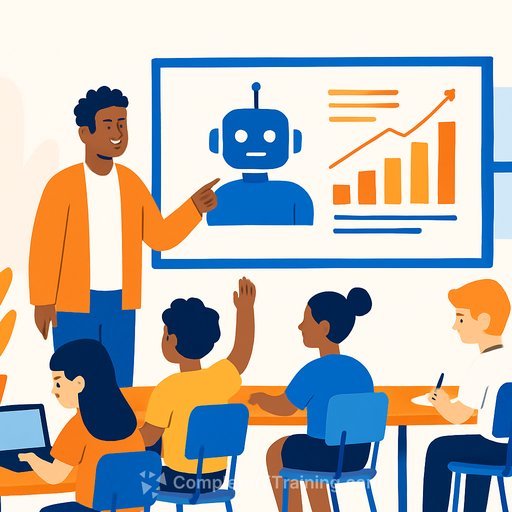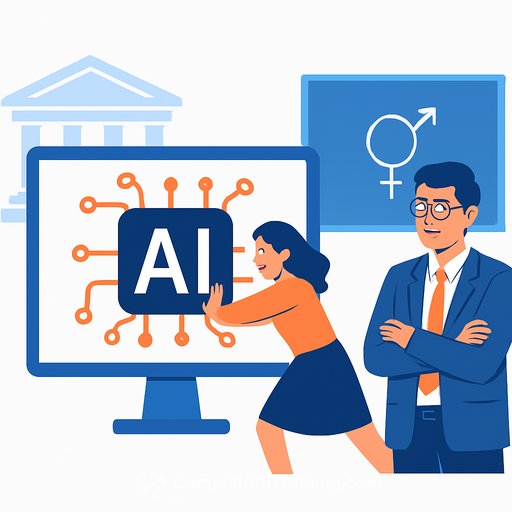Interviews: AI and the Future of Virtual Education
AI will not replace teachers. It will scale their impact-if we train educators to use it well and teach students to use it responsibly.
That's the stance of Antonio Roca, Managing Director at Academica Virtual Education. His team's work shows how thoughtful pedagogy, practical technology, and measurable results can coexist without losing the human core of learning.
What sets Academica Virtual Education apart
Academica blends decades of brick-and-mortar experience with over 15 years of virtual delivery. With a network of 200+ schools and daily service to 150,000+ students, they've translated proven classroom practices to digital environments without diluting teacher presence.
Their "Collegiate" platform connects 200,000+ learners globally and keeps learning personal. During COVID-19, classrooms were equipped with auto-tracking cameras and high-definition audio/video, so remote students could participate as if they were in the room. By merging physical and virtual spaces, teachers teach once, students learn from anywhere, and engagement stays high.
Closing the digital divide: platform fluency + parent access
Collegiate runs on iOS, Android, laptops, and iPads. Students-starting in elementary grades-log in, message teachers and principals, and build the digital habits required for fully digital curricula in middle and high school.
Parents have full access, too. Direct messaging replaces phone tag and paper notes, making two-way communication normal, fast, and accountable. When school and home stop operating as separate systems, students win.
AI as collaborator and catalyst
Academica adopted AI early and built the Adaptive Instruction Advisor (IA). The goal is simple: individualize learning without overwhelming teachers. The old "one teacher, 30 students" model pushes lessons to the middle; AI lets educators meet students where they are.
By analyzing practice data from state tests, SAT, or ACT, IA generates targeted objectives and exercises for each learner. Teachers remain central. AI becomes a planning and feedback engine that saves time and improves precision.
Training 6,000+ teachers: a practical roadmap
- Baseline AI literacy: what it can/cannot do, and how to vet outputs.
- Data to instruction: turn assessment data into small-group plans and individualized tasks.
- Prompt quality: teach questioning skills and clear task framing to improve responses.
- Ethics and safety: privacy, citation, bias checks, and responsible student use.
- Workflow: integrate AI into planning, feedback, differentiation, and parent updates.
- Assessment: monitor growth with quick checks tied to AI-generated objectives.
- Community of practice: share prompts, exemplars, and wins across teams.
The future will favor students and teachers who ask sharper questions and write clearer prompts. Subject knowledge plus precise inquiry equals better outcomes from AI systems.
The hybrid school of the future
Academica is building learning centers where students move between focused pod work and collaborative sessions with teachers. AI and virtual tools reinforce skills individually; group time builds social and cognitive muscles.
Schedules flex around real life. If a student trains as an athlete, their learning block can shift later in the day. Technology supports personalization; human connection keeps learning meaningful.
Evidence from underserved communities
Most Academica brick-and-mortar schools serve underserved communities. After-school tutoring is powerful but expensive. The scalable answer has been on-campus computer labs with virtual lessons for reinforcement, remediation, or acceleration.
Students work asynchronously and independently while teachers reclaim time for targeted instruction. Costs drop, access rises, and more students get the extra practice they need without staffing dozens of after-school sections.
What educators can implement this semester
- Audit access: devices, bandwidth, and a single platform for messaging and content.
- Run a data-informed cycle: use interim results to form groups and assign AI-generated practice.
- Launch parent comms: standardize weekly updates through a single channel.
- Stand up a 4-week after-school virtual lab: remediation on two priority standards.
- Build a prompt library by subject and task type; iterate weekly based on results.
- Teach a 20-minute AI ethics mini-lesson; require citations and bias checks.
- Track growth: quick pre/post checks aligned to each objective.
Helpful resources
- U.S. Department of Education: AI guidance and resources
- Complete AI Training: courses by job for educators and school teams
Bottom line: AI will not replace teachers. It will reward educators who keep learning, build clear workflows, and teach students to ask better questions-every day, in every class.
Your membership also unlocks:






